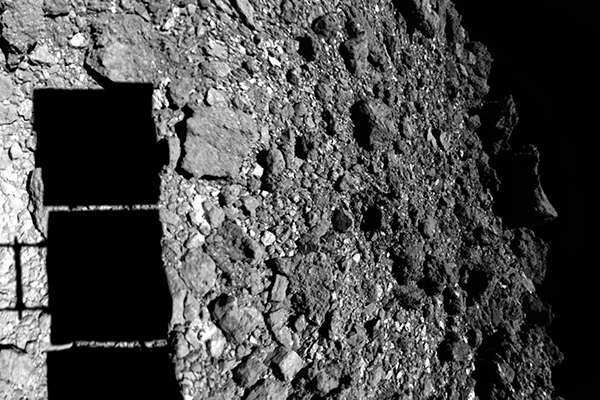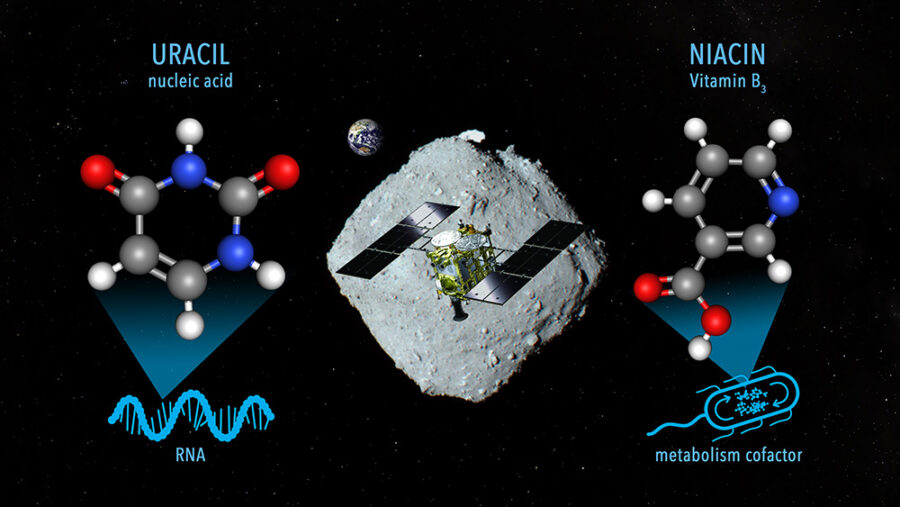Analysis of tiny samples from the near-Earth asteroid 162173 Ryugu has yielded uracil, one of the four nucleobases in RNA and a stepping stone on the path to life. It bolsters the case that space may have provided compounds vital in the evolution of life on Earth.

This composite image shows the surface of near-Earth asteroid 162173 Ryugu, taken by the Hayabusa2 spacecraft just before its first touchdown on the surface. The spacecraft’s solar ray paddle casts a shadow on Ryugu’s surface.JAXA / U. Tokyo / Kochi U. / Rikkyo U. / Nagoya U. / Chiba Inst. Tech. / Meiji U. / U. Aizu / AIST
A decade ago, researchers studying meteorites found several compounds considered precursors to life. And last year, Yasuhiro Oba (Hokkaido University, Japan) and colleagues used a more sensitive technique to detect additional compounds essential for life in meteorites. Evidence seemed to show that chemical reactions in the young solar system might have produced the building blocks of life, which meteorites then delivered to Earth.
However, meteorites are far from pristine. They pick up contaminants from the air, water, and heating as they fall through the atmosphere. The acid test is to collect pristine samples from asteroids while they still orbit in space. The samples that Japan’s Hayabusa 2 probe carefully collected during its visit to Ryugu should have very little or no terrestrial contamination, strengthening the case for an extraterrestrial origin for any prebiotic materials found.
Hayabusa 2 collected 5.4 grams from two spots on Ryugu and delivered them to Earth on December 6, 2020. Early studies showed the samples contained many organic compounds. That led Oba’s group to analyze two 10-milligram samples using the same sensitive technique they had used earlier on meteorites. The technique can detect nucleic acid bases at levels down to parts per trillion in small samples.

A conceptual image shows uracil and vitamin B3; Hayabusa 2 brought back samples from Ryugu containing both of these prebiotic compounds.NASA Goddard / JAXA / Dan Gallagher
Now, they report in Nature Communications that uracil is present at a level of parts per billion in both Ryugu samples. While this concentration is lower than found previously in some (but not all) meteorites, Oba says that might be because the parent bodies of the meteorites and of Ryugu underwent different levels of aqueous alteration and other processes. They also detected niacin (vitamin B3) as well as other organic molecules, but they didn’t find any other nucleobases.
“The detection of uracil itself is very important [because] it provides firm evidence for the presence of these molecules, including uracil, in space,” says Oba. He says photochemical reactions among simple interstellar ice molecules may have produced biological precursors before the birth of the solar system. Then, if those precursors could make their way onto a planet intact, they could eventually contribute to the evolution of life.
Source: Skyandtelescope








